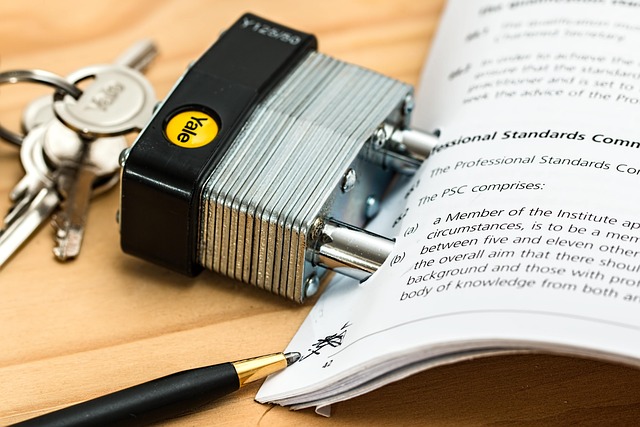Motorcycle accidents pose high risk for severe spinal injuries, from whiplash to paralysis. Understanding these injuries, their symptoms, and lack of protection offered by motorcycles is vital for prevention. Riders must prioritize safety measures like wearing approved gear to reduce risks, compared to other physical harm causes. Immediate medical attention after accidents is crucial, focusing on spine stability and preventing further damage. Proper training, staying alert, and avoiding distractions also significantly reduce accident likelihood and potential spinal injuries. Post-accident care involves specialized equipment, imaging scans, physical therapy, rehabilitation, and regular check-ins with specialists for a safer return to daily activities.
“Motorcycle accidents pose significant risks, particularly when it comes to spinal injuries. This comprehensive guide delves into the prevention, management, and recovery of spinal injuries in such incidents. Understanding the severity and types of spinal damage is crucial, as are the risk mitigation strategies we outline for motorcyclists. Additionally, post-accident care and recovery tips ensure a smoother path toward healing. By embracing these insights, riders can enhance their safety and minimize potential spinal trauma during motorcycle accidents.”
- Understanding Spinal Injuries in Motorcycle Accidents
- Risk Mitigation Strategies for Motorcyclists
- Post-Accident Care and Recovery Tips
Understanding Spinal Injuries in Motorcycle Accidents

Motorcycle accidents can lead to a range of serious injuries, with spinal injuries being particularly concerning. These injuries occur when there is damage to the spine, which can result in impaired mobility, chronic pain, and even paralysis. In the context of motorcycle crashes, spinal injuries often occur due to the force exerted on the rider during the impact, as well as the lack of protection provided by a motorcycle compared to other vehicles. Understanding these injuries is the first step towards preventing them and mitigating their effects.
Spinal injuries in motorcycle accidents can range from minor whiplash-like symptoms to severe damage to the vertebrae, discs, or spinal cord. Recognizing the signs and symptoms of such injuries is crucial. Common indications include intense pain, numbness or tingling in the extremities, difficulty walking or standing, and in severe cases, loss of bladder or bowel control. It’s important for motorcycle riders to be aware of these potential consequences to seek immediate medical attention following an accident. Moreover, understanding that proper safety measures, such as wearing approved protective gear, can significantly reduce the risk of spinal injuries is paramount, especially when considering the risks associated with other types of accidents like employment disputes or medical negligence, which might also result in significant physical harm.
Risk Mitigation Strategies for Motorcyclists

Motorcyclists face a unique set of risks on the road compared to drivers of larger vehicles. To mitigate these dangers and significantly reduce the likelihood of spinal injuries in motorcycle accidents, several proactive strategies can be employed. One of the most effective is adhering to proper safety gear, including wearing approved helmets designed to absorb impact energy and protect the head and neck. Additionally, investing in high-visibility clothing increases motorcyclists’ visibility to other drivers, reducing the chances of being involved in an accident.
Another crucial risk mitigation strategy involves staying alert and focused while riding. This includes avoiding distractions such as using mobile phones or listening to loud music, maintaining a safe speed appropriate for road conditions, and constantly scanning the horizon for potential hazards. Proper training and understanding of motorcycle handling dynamics can also equip riders with the skills needed to navigate unexpected situations safely, significantly enhancing their ability to avoid accidents and minimize injuries, including spinal injuries in auto accidents involving motorcycles.
Post-Accident Care and Recovery Tips

After a motorcycle accident, immediate and proper care is crucial for managing potential spinal injuries. The first step is to ensure stability and prevent further damage. This involves immobilizing the spine using specialized equipment or splints while waiting for medical professionals. Every minute counts when dealing with spinal injuries, so prompt emergency response is essential.
Once in a medical facility, patients should expect thorough assessments, including imaging scans like X-rays, MRIs, or CT scans to determine the extent of the injury. Proper treatment plans, often involving physical therapy and rehabilitation, are then designed to aid recovery. During this period, it’s important for riders to communicate openly with their healthcare team about any pain or discomfort, as well as adhere to prescribed exercises and rest periods. Regular check-ins with specialists can help monitor progress and adjust care plans as needed, ensuring a safer return to daily activities, whether that means getting back on a motorcycle or navigating employment disputes or nursing home neglect concerns due to the accident’s impact.
Motorcycle accidents can cause serious injuries, with spinal injuries being among the most severe. By understanding the risks and implementing mitigation strategies, motorcyclists can significantly enhance their safety on the road. Post-accident care and recovery tips are essential for managing any injuries sustained and ensuring a smooth path to healing. Remember, preventing spinal injuries starts with knowledge, preparation, and proactive care.






